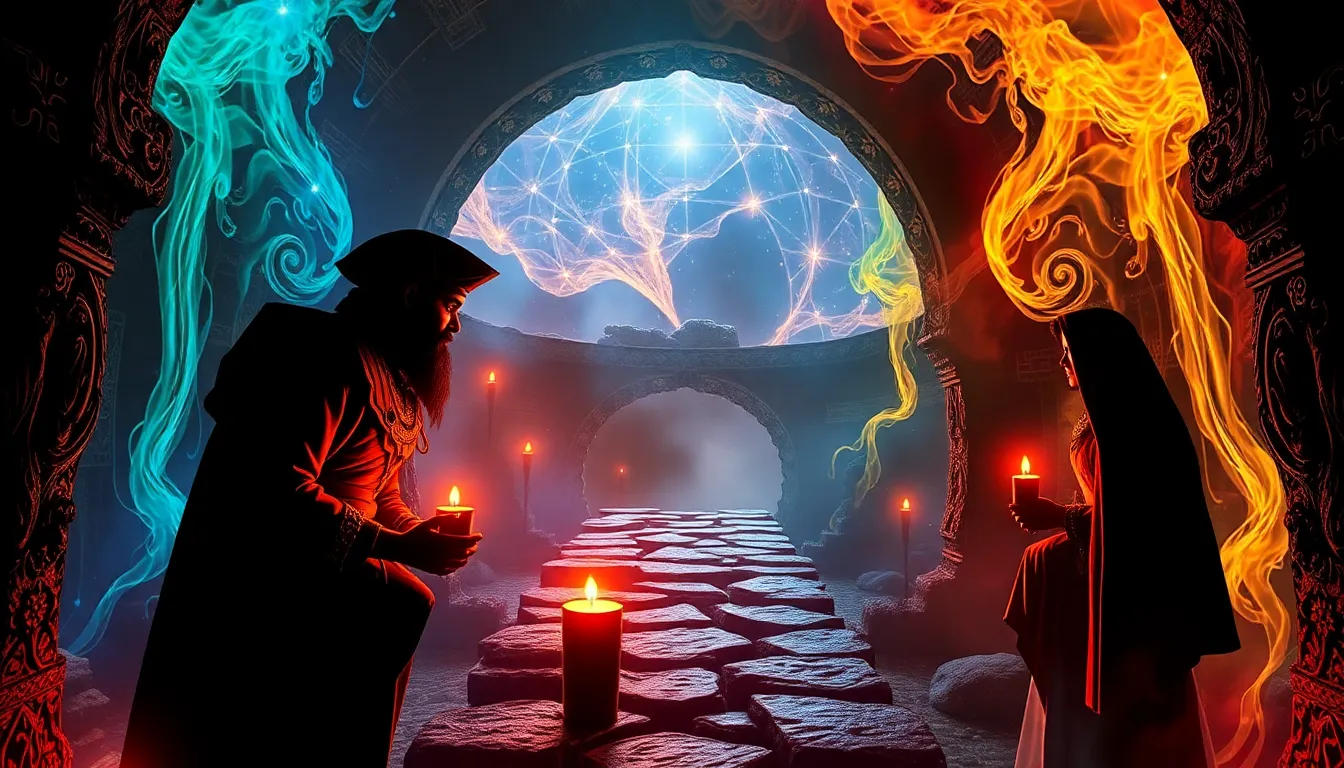The Mythical Sanctuary: Safe Havens in Sacred Places
I. Introduction to Sacred Places
Sacred places hold profound significance across various cultures and religions, serving as physical and spiritual anchors for communities. These locations are often imbued with deep historical and spiritual meanings, providing individuals with a sense of connection to the divine, the past, and each other.
In many traditions, a sacred place is defined as any location that holds a special spiritual significance, often associated with divine presence or historical events. This can include mountains, rivers, temples, churches, and groves. These spaces are not merely geographical; they are imbued with stories, rituals, and communal practices that enhance their sanctity.
The concept of mythical sanctuaries extends beyond physical boundaries, symbolizing safe havens where individuals can seek refuge from the chaos of everyday life, engage in spiritual practices, and find solace.
II. Historical Context of Sacred Havens
Throughout history, ancient civilizations have established sacred sites that serve as focal points for worship, reflection, and community gathering. Places like the pyramids of Egypt, the ziggurats of Mesopotamia, and the ancient ruins of Greece and Rome are prime examples of how societies have designated locations as significant to their cultural and spiritual identity.
The role of temples, groves, and shrines has been pivotal in shaping historical narratives. For instance:
- Temples: Often built as homes for deities, temples were places where people would come to offer prayers and sacrifices.
- Groves: Many cultures revered natural groves as sacred, believing that the spirits of the forest dwelled within them.
- Shrines: These smaller dedicated spaces often commemorate specific events or figures, serving as personal and communal sites of worship.
As societies evolved, so did the concept of sanctuary. From the ancient world to the Middle Ages, the idea of a safe haven transformed, reflecting changes in spiritual beliefs, societal structures, and architectural advancements.
III. The Spiritual Significance of Safe Havens
Safe havens, particularly those deemed sacred, play a crucial role in promoting mental and emotional well-being. They provide individuals with a space to reflect, meditate, and connect with something greater than themselves. The tranquil environment of these locations often fosters a sense of peace and clarity.
The connection between nature and spirituality is evident in many sacred spaces. The serene landscapes surrounding these sites act as a reminder of the beauty and complexity of creation. Many people find that spending time in nature enhances their spiritual practice and deepens their understanding of the universe.
Rituals and practices associated with these sacred places vary widely but often include:
- Prayer and meditation
- Ritual offerings
- Festivals and communal gatherings
IV. Geographic Diversity of Mythical Sanctuaries
Across the globe, numerous notable sacred sites reflect the diversity of cultural beliefs and practices. Some of these include:
- Stonehenge (England): A prehistoric monument that continues to intrigue and inspire spiritual seekers.
- Mount Sinai (Egypt): Traditionally believed to be the mountain where Moses received the Ten Commandments.
- Mecca (Saudi Arabia): The holiest city in Islam, where millions of Muslims gather annually for the Hajj pilgrimage.
Regional variations in the concept of sanctuary also highlight unique spiritual practices. For example, in Japan, Shinto shrines are deeply intertwined with nature, while in India, the Ganges River is considered sacred, embodying purity and life.
V. Architectural Features of Sacred Spaces
The architecture of sacred spaces often features design elements that reflect their spiritual significance. Common elements can include:
- High ceilings and expansive spaces that evoke a sense of awe
- Use of natural materials like wood and stone to connect with the earth
- Symbolic representations in art and carvings that tell stories of faith
Famous sacred structures like Hagia Sophia in Istanbul and Angkor Wat in Cambodia showcase the intersection of architecture, spirituality, and culture. These buildings not only serve as places of worship but also as monuments to human creativity and devotion.
VI. The Role of Myth and Legend in Creating Safe Havens
Myths and legends play a crucial role in shaping our understanding of sanctuaries. They provide context and narrative to the significance of these places, enriching the cultural tapestry surrounding them. Many sacred sites are steeped in stories that explain their origin or the divine events that occurred there.
For example, the myths surrounding the creation of the ancient city of Jerusalem or the legends of the Hindu gods associated with the Ganges River illustrate how folklore can influence the sanctity of a place. These stories are often passed down through generations, contributing to cultural preservation and collective identity.
VII. Contemporary Uses of Sacred Spaces
In today’s fast-paced world, the interpretation of sanctuary has evolved. Modern urban environments have seen a revival of interest in creating sacred spaces that cater to the spiritual and emotional needs of individuals. This includes:
- Spiritual retreats that offer a break from the hustle of daily life
- Wellness centers that integrate holistic practices with spirituality
- Urban parks designed as places for reflection and relaxation
Moreover, sacred places continue to play a vital role in contemporary religious practices, providing communities with a space for worship, celebration, and connection.
VIII. Challenges Facing Sacred Sites Today
Despite their importance, sacred sites face numerous challenges in the modern world. Some of the key issues include:
- Environmental threats: Climate change, pollution, and natural disasters can jeopardize the integrity of these sites.
- Commercialization: The rise in tourism can lead to the commercialization of sacred spaces, undermining their spiritual significance.
- Preservation efforts: Local communities often play a crucial role in preserving these spaces, but they require support and resources to do so effectively.
IX. Personal Experiences and Anecdotes
Many individuals share transformative experiences after visiting sacred places. These locations provide a sense of belonging, peace, and healing. Testimonials often recount feelings of connection to the divine or profound insights gained through prayer and meditation in these spaces.
Stories highlight the power of sacred places to foster personal growth and communal bonds, emphasizing their enduring significance in the modern world. Whether through a pilgrimage to a holy site or a quiet moment of reflection in a natural sanctuary, many find solace and inspiration in these mythical havens.
X. Conclusion: The Enduring Legacy of Mythical Sanctuaries
The legacy of mythical sanctuaries endures, reminding us of the importance of sacred spaces in our lives. They continue to serve as safe havens where individuals can explore their spirituality, seek inner peace, and connect with a larger community. In an increasingly chaotic world, the relevance of these sacred places is more significant than ever, offering wisdom, healing, and hope.



